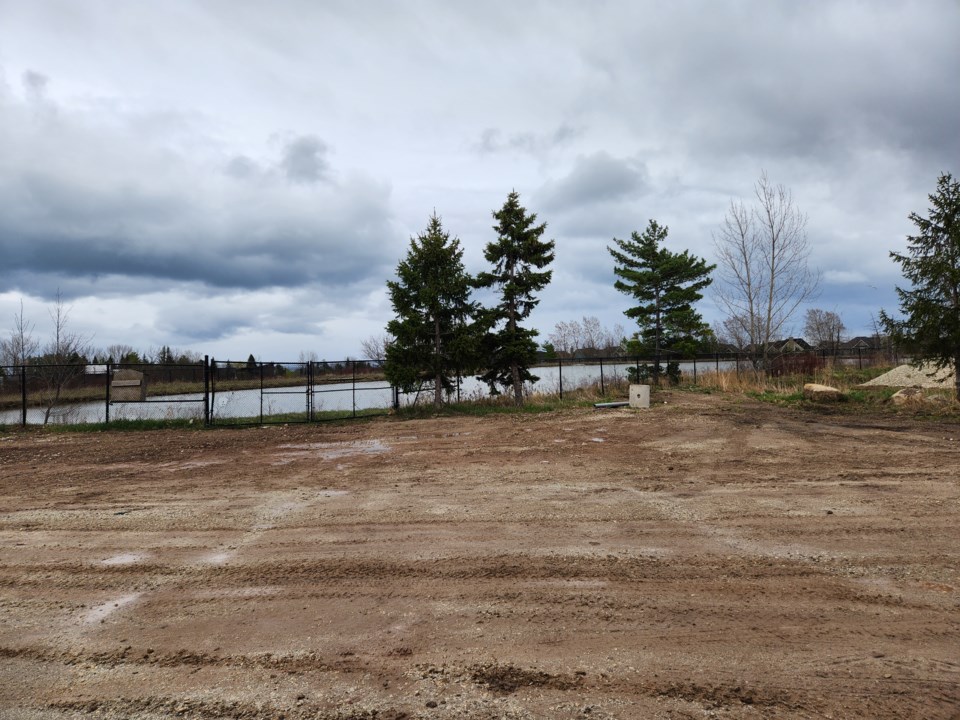A proposal to relocate a Bell cellular phone tower at the Craigleith Ski Club to a new location has stirred up plenty of public opposition.
On April 18, The Blue Mountains council held a public meeting about the proposed cell tower relocation. Although the federal level of government has final authority over the approval of the tower’s location, The Blue Mountains has a policy in place that requires public consultation on proposed telecommunications facilities. The federal government also requires proponents to consult with the local community as part of its process.
The proposal would see the Bell tower moved 158 metres east from the base of the ski hill, next to a ski lift to a site beside a nearby pond. If approved, a 22 metre (project consultants said later in the meeting this had been reduced to 20 metres) monopole tower would be built, with a 10-metre by 10-metre fenced-in compound at the base. The compound would include a small building. The new tower would continue to be shared by Bell with Telus.
A second cell tower on the property that belongs to Rogers would not be impacted by the proposal.
The proposal generated significant public opposition with the town receiving numerous written comments from the public opposing the proposal. A number of local residents also spoke to council at the meeting. Local residents expressed concerns about the view of the escarpment being impacted by the tower, the aesthetics and the impact on property values.
Sean Galbraith of SJSB Network Consulting represented Bell at the meeting and explained the tower had to be relocated due to issues with the ski lift operations. Galbraith said the location near the pond had been suggested by the ski club.
Galbraith said the current tower is “causing flooding and considerable damage to the Craigleith lift operations.”
Galbraith said the current tower must be replaced and Bell’s goal is to improve the facility and service in that area.
“The goal is, frankly, to make it better,” he said.
During his presentation Galbraith included a series of photos that showed views of the proposed tower from various nearby locations. The closest home would be 170 metres away from the proposed tower site.
Several local residents spoke at the meeting to express opposition.
“It’s very tall. It’s just inconsistent with trying to maintain the Niagara Escarpment in its natural form,” said Ross Kappele. “It needs to be re-thought.”
Councillors Paula Hope and June Porter both suggested Bell should include options that are more visually appealing for council to consider. Coun. Gail Ardiel expressed frustration that two cell towers will be located within a few hundred feet of each other.
“Why are Bell and Rogers not sharing towers? (Towers) are not pleasant to look at, but we do need them. Could Rogers and Bell get together?” said Ardiel.
Galbraith said “tower sharing” is quite common in the industry and is encouraged by the federal government. He said in this case that the antennas on the existing Rogers tower are too close to the ground to accommodate infrastructure from Bell. Galbraith also noted that shared towers often need to be taller and larger, as they must accommodate more equipment.
Matthew Milligan, a representative from Bell, also spoke to council and said there would be a huge gap in coverage on the Bell and Telus network if the tower is not replaced/relocated.
“It is essential to maintain telecommunication services in this area,” he said.
Council made no decisions at the meeting. A full staff report on the proposal will come to a future committee of the whole meeting for council consideration.

.jpeg;w=120;h=80;mode=crop)

